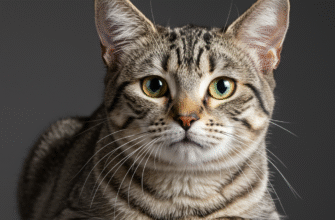Content
How Does Leptospirosis Spread?
The primary way Leptospira bacteria contaminate the environment is through the urine of infected animals. A wide range of animals can carry and shed the bacteria without necessarily showing signs of illness themselves. Common carriers include:- Rodents (rats, mice)
- Wildlife (raccoons, skunks, opossums, deer)
- Farm animals (cattle, pigs, horses)
- Domestic pets (especially dogs, but cats less commonly)
- Broken skin: Cuts, scratches, or abrasions provide an easy entry point.
- Mucous membranes: The linings of the eyes, nose, and mouth are vulnerable.
- Ingestion: Drinking or accidentally swallowing contaminated water.
Puddles: Prime Locations for Exposure
Why are puddles such a focal point for Leptospirosis risk? Their very nature makes them efficient collection points for contaminants. Rainwater can wash animal urine from surrounding areas, concentrating bacteria in these temporary pools. Stagnant water provides an ideal environment for the bacteria to persist. Furthermore, puddles often form in areas frequented by both animals and people:- Urban environments: Gutters, poorly drained sidewalks, and parks can collect water contaminated by rodents or stray animals.
- Rural areas: Farmyards, fields, and ditches are common spots where livestock or wildlife urine can contaminate standing water.
- Recreational areas: Parks, trails, and campsites often have muddy patches and puddles after rain.
- Floodwaters: Flooding is a major risk factor, as it widely disperses contaminants, including animal urine, turning large areas into potential exposure zones. Floodwaters often mix with sewage, further increasing health risks.
Important Warning: Standing water, especially after heavy rains or floods, can be contaminated with Leptospira bacteria shed in animal urine. Avoid contact with puddle water or floodwaters whenever possible. This includes preventing pets from drinking or playing in these sources.
Who Needs to Be Aware?
While anyone exposed to contaminated water or soil could potentially be at risk, certain groups have a higher likelihood of encountering the bacteria. This includes:- Pet Owners: Dogs are particularly susceptible due to their behaviors like sniffing the ground, drinking from puddles, swimming in ponds, and potentially encountering wildlife or rodents.
- Outdoor Workers: Farmers, veterinarians, agricultural workers, sewer workers, miners, and construction workers often have direct contact with soil and water that might be contaminated.
- Recreational Water Users: Swimmers, kayakers, rafters, and anglers using lakes, rivers, or canals potentially contaminated by animal urine face increased risk, especially after heavy rainfall.
- Residents in Flood-Prone Areas: Exposure risk significantly increases during and after flooding events.
- Campers and Hikers: Traversing wet trails or using natural water sources without proper treatment can lead to exposure.
Recognizing Potential Issues in Pets
Since dogs are frequently affected, pet owners should be aware of general signs that might indicate a problem after potential exposure, particularly if their dog has been playing in or drinking from puddles or natural water bodies. Vague signs can include sudden lethargy, shivering, muscle tenderness or reluctance to move, increased thirst and urination (or sometimes decreased urination), vomiting, diarrhea, or fever. If you notice any unusual changes in your dog’s behavior or health, especially after they’ve been in wet outdoor environments, consulting a veterinarian promptly is always the best course of action. Early veterinary intervention is key for pets suspected of having Leptospirosis.Prevention: Staying Safe Around Water
The good news is that awareness and simple precautions can significantly reduce the risk of encountering Leptospirosis.For People:
- Avoid Contaminated Water: Do not wade, swim in, or drink water from puddles, ditches, floodwaters, or stagnant ponds, especially after heavy rains.
- Protective Gear: If contact with potentially contaminated water or soil is unavoidable (e.g., during cleanup after floods, certain occupations), wear waterproof boots, gloves, and potentially eye protection.
- Cover Wounds: Ensure any cuts, scratches, or open sores are covered with waterproof dressings before potential exposure.
- Practice Hygiene: Wash hands thoroughly with soap and water after handling animals, working outdoors, or coming into contact with potentially contaminated water or soil.
- Rodent Control: Take measures to control rodent populations around homes and workplaces, as they are significant carriers of the bacteria. Seal potential entry points and manage waste properly.
For Pets (Especially Dogs):
- Vaccination: Talk to your veterinarian about Leptospirosis vaccination. Vaccines are available that protect against several common strains of the bacteria. While not offering 100% protection against all strains, vaccination can significantly reduce the severity of illness and the risk of shedding bacteria.
- Discourage Drinking from Puddles: Actively prevent your dog from drinking out of puddles, ponds, lakes, or slow-moving rivers. Carry fresh water for them when outdoors.
- Supervise Outdoor Activity: Keep a close eye on your dog outdoors, especially in areas known to have wildlife or rodent activity, or after periods of rain. Rinse them off if they get particularly muddy or swim in natural water bodies.
- Control Rodents: Keep pet food stored securely and manage property to discourage rodents, reducing the chance of your pet encountering infected animals or their urine.
Verified Fact: Leptospirosis is considered a zoonotic disease, meaning it can be transmitted from animals to humans. The most common source of environmental contamination is urine from infected animals, including rodents, wildlife, livestock, and dogs.









